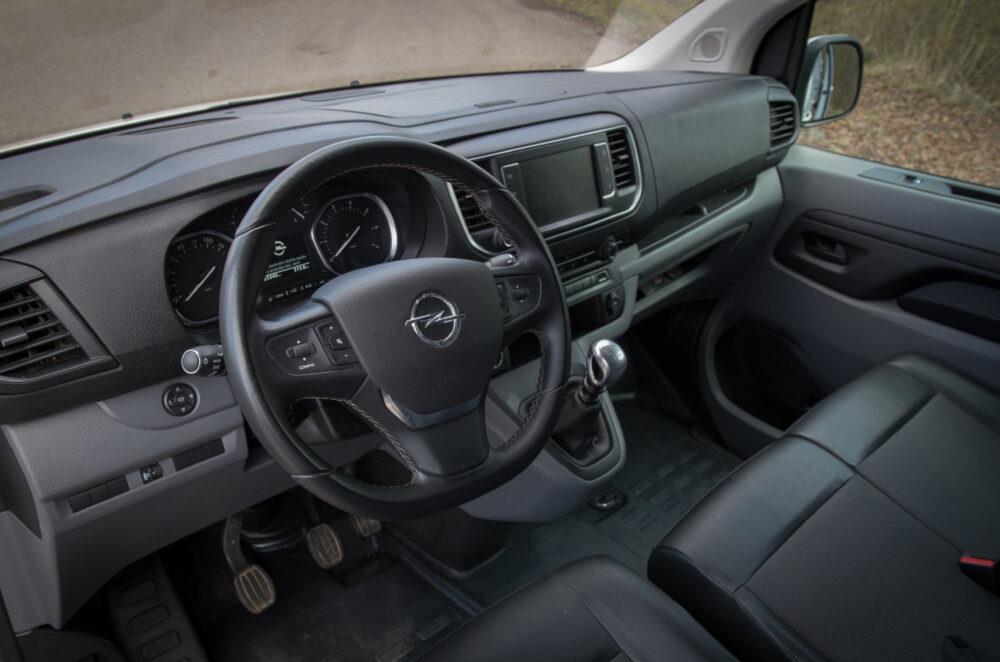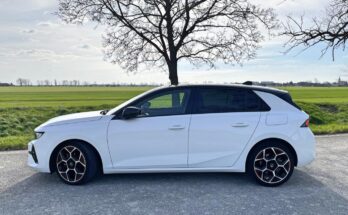A German hard worker with a twenty-year tradition, one would like to say. But it's not that simple with the pure German family tree. After all, the Vivaro has always had French roots. Both the first (production 2001 – 2014) and the second (production 2014 – 2019) generations of the Vivaro were based on the Renault Traffic. In the current third generation, which has been on the market for the third year already, the Vivaro is based on "concern siblings" from PSA – i.e. the Citroen Jumpy / Peugeot Expert.
In Opel's offer, you can choose from a fairly wide range of engines under the hood of the Vivaro, from the basic diesel 1500 (in the weakest version 75kW/102k), through the two-liter (maximum 110kW/150k) to the fully electric 100kW version. Three lengths, two heights, the option of a second row of seats, different levels of equipment… In short, the variants are endless (according to the current price list, almost 30).
The Vivaro "in long" (that's the slang term for extended versions of luxury limousines) arrived at the editorial office for the test, i.e. in the longest variant "L" with a two-liter diesel engine with an output of 90 kW/122 hp in the Enjoy equipment.

At first glance, the Vivaro, in its longest version, looks like a dachshund. Almost five and a half meters in length (5,309 mm) at first glance makes it clear that you will be transporting a lot; but at the same time, with a height of up to two meters, you don't have to worry about driving into most underground garages, including shopping centers. The monolithic white surface of the sides then directly calls for some wild corporate sticker. Overall, however, the external impression does not deviate in any way from the line set by Citroen / Peugeot / Toyota. In terms of appearance, these concern siblings differ practically only in the visuals of the front mask and lights – in short, they did not engage in any big experiments at Opel.
In the interior, you settle into fabric seats with leather sides. The driver's seat is separate, fully adjustable and has an armrest. The other two passengers then share the bench – while there is a relatively large storage compartment under the middle seat and the backrest can be transformed into a wide armrest for passengers when you are traveling with only two.

The equipment of the tested Vivaro was a pleasant surprise. The adaptive cruise control is hidden under the adjustable multifunction steering wheel; a light and rain sensor is a matter of course. The additional head-up display helps the driver to focus as much as possible on what is happening on the road and not to be distracted by on-board devices or a beautiful tracker. In addition to storage spaces and manual climate control, the center panel also offers an additional multimedia system with Apple CarPlay / Android Auto support, which also displays the rear parking camera. Although the tested Vivaro is equipped with a classic key, starting is done with a button. The head of the six-speed manual transmission in polished metal looks damn stylish… but in this case, the style is bought by a lot of impracticality. On cold winter mornings, one should wear gloves when driving (or shifting gears).

The cargo space of the Vivara offers a volume of approximately four and a half to six and a half cubic meters, depending on the chosen body variant. In our case, this means a length of the loading area of 2.86m with a width between the undercarriage of 1.26m. Yes, you counted correctly! Thanks to its dimensions, the Vivaro can accommodate three Euro pallets with a total weight of almost 1.4 tonnes. If you add a braked trailer with a possible total weight of up to two and a half tons, the Vivaro becomes a really competitive worker. The maximum possible weight of the entire set is then 5 tons. The "groove" in the dividing partition is also very handy, thanks to which you can transport rods / pipes with a length of up to four meters.

On the road, the Vivaro behaves… well… like a van. It can feel a little hard and jerky on bumps, but of course it softens a little under load. But it is sure in the corners and does not lean excessively. At higher speeds it is more susceptible to crosswinds, but not overly so thanks to the overall lower build. The six-speed gearbox is reasonably graduated, thanks to it the Vivar does not run out of breath even at the highway limit. And if you happen to be short of kilowatts when towing a trailer, there is always the option of choosing the most powerful 150-horsepower two-liter.
Consumption in the test was around eight liters in combined operation. The city/highway combination prevailed, with some districts here and there. Even seven liters can be reached with a light foot, and when fully loaded, of course, it jumps up by a liter…

The list price of the tested Vivaro attacked the magical million mark, but Opel offers quite a lot of music for it. And if you want, for example, a navigation system or a head-up display, the price tag will be even more interesting. Regardless of the fact that car companies usually offer interesting fleet programs for business customers with discounts of up to tens of percent.
Photo: Author

























